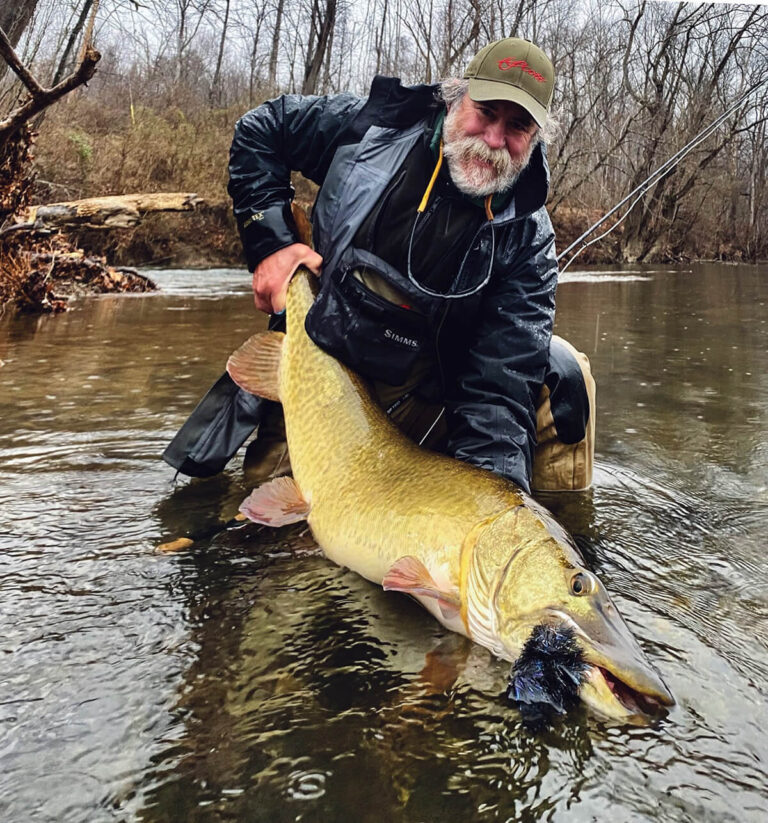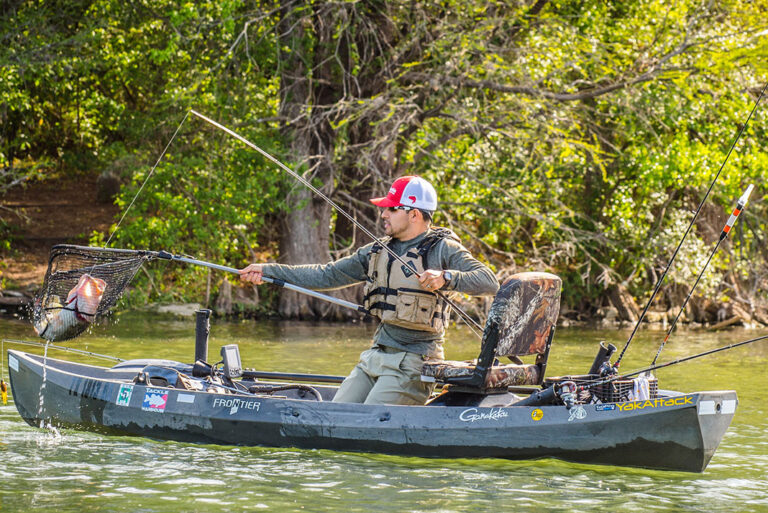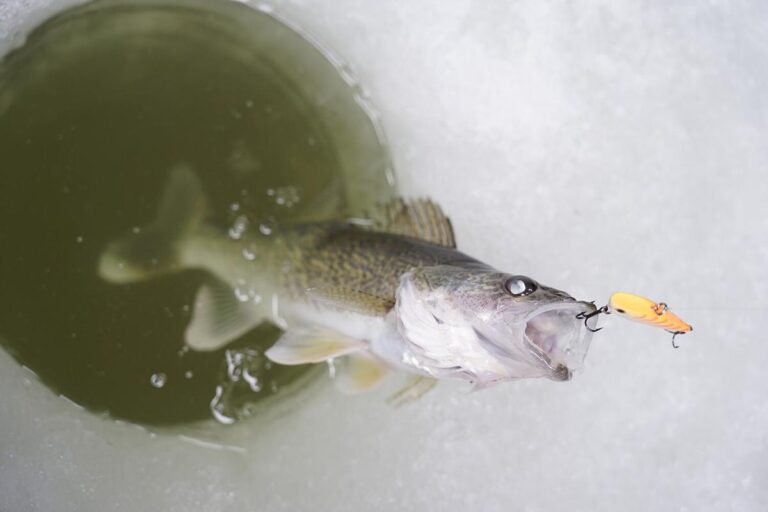Fly fishing tactics for river fishing include reading the water, choosing the right fly, and learning to cast effectively. River fishing is one of the most exhilarating experiences for fly fishermen.
It requires patience, precision, and a deep understanding of the river and its inhabitants. Knowing the right tactics can make a huge difference in your catch success. The first tactic is to read the water and understand the feeding habits of the fish.
The second is to choose the appropriate fly for the type of fish and water conditions. Finally, mastering the art of casting is crucial to a successful fly fishing experience. In this article, we will discuss these tactics in more detail to help you become a pro river fly fisher.

Credit: news.orvis.com
Why Mastering Fly Fishing Tactics Is Essential For River Fishing
Introduction To The Concept Of Fly Fishing Tactics
Fly fishing is a popular method of fishing on rivers, streams or other freshwater bodies. Unlike traditional lure fishing, fly fishing uses a weighted line and an artificial fly to mimic the natural prey of the fish. However, this technique requires special tactics to succeed.
In this blog post, we will explore the importance of mastering fly fishing tactics and how it can impact your catch success.
Explanation Of How Fly Fishing Tactics Can Impact Catch Success
The right tactics can make all the difference in fly fishing. Here are a few ways these tactics can impact your catch success:
- Fly selection: Choosing the right fly can improve your chances of catching fish. It’s important to match the fly to the type of insects that the fish are feeding on.
- Casting techniques: The proper casting techniques can help you place the fly effortlessly on the water, drawing in the fish.
- Reading the water: Knowing how to read the water can help you identify the places where fish are likely to be present, increasing your chances of catching them.
- Presentation: The presentation of the fly is critical in fly fishing. A well-presented fly can entice fish to bite when nothing else will.
Examples Of How Mastering Tactics Can Make A Difference In River Fishing
Mastering fly fishing tactics can be the difference between a successful and an unsuccessful day of fishing. Here are some examples of how tactics can make a difference in fly fishing:
- In a situation where the fish are feeding on the surface, using the right fly with the correct presentation can increase your chances of tempting a strike.
- When fishing in fast-moving water, knowing how to cast upstream and let the fly drift downstream with the current can lead to more bites.
- In a river with a slow current, it’s necessary to use a small fly with a delicate presentation to catch selective fish.
- When fishing in difficult conditions, such as heavy winds or low light conditions, proper casting techniques and fly selection can help increase your chances of catching fish.
Mastering fly fishing tactics is crucial to improve your catch success on the river. By paying attention to each aspect of fly fishing, you can improve your chances to outsmart the fish and make your fly look like real food.
Give yourself the best chance for success by honing your fly fishing tactics with practice and patience.
Understanding The Types Of Fly Fishing Tactics
Overview Of Different Types Of Fly Fishing Tactics
When it comes to fly fishing, there are different tactics you can choose from depending on the type of water you’re fishing in and the fish you’re targeting. Here’s an overview of the most common types:
- Dry fly fishing: This tactic involves using a floating fly that resembles an insect or a bug on the surface of the water. The fly is lightweight, so you need to cast it gently on the water.
- Nymph fishing: Nymph fishing involves using a fly that mimics the underwater stage of an insect’s life cycle. The fly is weighted and sinks to the bottom of the river, so you can catch fish that are feeding underwater.
- Streamers: Streamers are large flies that imitate baitfish, minnows, or leeches. They are retrieved with twitches and jerks to simulate a fleeing prey. Streamer fishing is ideal for catching bigger fish such as trout, salmon or bass.
Discussion Of When And How To Use Each Tactic
The choice of tactic depends on the type of fish you want to catch and the environmental conditions you face. Here’s a breakdown:
- Dry fly fishing is the best tactic when the water is clear and calm, and fish are rising to the surface to feed. It’s ideal for catching trout or grayling that are taking insects from the surface of the water.
- Nymph fishing is a deadly technique when the water is murky and fish are feeding underwater. The nymph should be allowed to drift naturally with the flow of the river, keeping the line tight enough to detect any bites.
- Streamers are most effective when the water is murky or there’s a lot of cover where fish can hide. Use a strip, pause, and jerk type retrieve to make the streamer look like an injured baitfish that is easy prey.
Examples Of Successful Implementation Of Tactics
The success of a fly fishing tactic depends mainly on the skill level of the angler, the ability to read the water flow, and the ability to match the hatch (selecting a fly that looks like a bug or baitfish the fish are actively feeding on).
Here are a few examples of successful implementation of tactics:
- Dry fly fishing: An angler fishing elk hair caddis on the bow river in alberta was able to catch a brown trout that was feeding on caddis flies hatching on the surface of the river.
- Nymph fishing: An angler fishing with a stonefly nymph in the big hole river in montana was able to catch a big rainbow trout that was feeding at the bottom of the river.
- Streamer fishing: An angler fishing a woolly bugger on the henry’s fork river in idaho was able to catch a big brown trout that was feeding aggressively on juvenile sculpins.
Overall, understanding the different types of fly fishing tactics is crucial to becoming a successful angler. By selecting the right tactic based on environmental factors and fish behavior, an angler can increase their chances of catching more fish.
The Top Fly Fishing Tactics For Mastering River Fishing
Fly fishing tactics for river fishing: the top fly fishing tactics for mastering river fishing
If you are a fisherman interested in mastering river fishing, then fly fishing tactics are sure to be critical to your success. Below we’ve listed the top fly fishing tactics that you must know.
Description Of The Top Fly Fishing Tactics Associated With River Fishing Success
Successful river fishermen will tell you that fly fishing is a challenging sport that requires an ample amount of patience, skill, and knowledge of the habits of fish. One of the most important factors to consider when fly fishing in rivers is that fish are more likely to be found in certain areas.
These areas would include overhanging bushes, undercut banks, deep pools, and areas with sudden drop-offs in depth.
Detailed Explanation Of Each Tactic And How To Use It
- Nymphing: Nymphing is the most well-known and effective tactic for river fishing. This tactic involves fishing with an imitation insect that is tied to the underwater line, also known as the nymph. To nymph, an angler must cast the line downstream and adjust the position of the nymph in the water based on the location of fish. When a fish takes the nymph, it can be easily recognized by the tightening of the line.
- Streamer fishing: Streamer fishing is another fly fishing tactic that can be successful on rivers. This tactic involves using a streamer – a baitfish imitator – and casting it across the stream. The cast that follows involves more weight and length to guide the streamer to the bottom. This tactic is more functional during high water flow or when the waters are cloudy.
- Dry-fly fishing: Dry-fly fishing is one of the essential fly fishing tactics and is generally thought of as a more classic form of fly fishing. This tactic is not commonly used by beginners because it requires the angler to cast precisely and shouldn’t make any visible disruptions to the water’s surface. The anglers use an “iris” (viszible) imitation of a real fly that floats on top of the water. Dry-fly fishing is more successful during the aquatic insect hatching season.
Examples Of Successful Implementation Of Each Tactic
- Nymphing: When nymphing, an angler should cast the nymph upstream and then maneuver it through the current while keeping the fly line tight. When a fish takes the nymph, the line should be struck to set the hook into the fish’s mouth. The angler should maintain the tension on the line to ensure that the fish stays hooked.
- Streamer fishing: A streamer bait can realistically mimic any baitfish swimming in the river, and by using this tactic, anglers can attract large trout or other fish. To implement this tactic, cast the streamer across the river and make short strips while keeping the streamer near the river’s bottom. If the cast is right and the fish strike the fly midstream, the next strip should be longer. It is important to vary the strip’s length and rhythm to provoke strikes.
- Dry-fly fishing: Dry-fly fishing is all about attracting the fish with a natural-looking fly. To do this, an angler must make an accurate cast upstream and let the fly drift downstream in the river’s current. But it’s essential to keep an eye on the fly and put a slight twitch to identify the strike of a fish. It would be tempting to strike instantly when an angler sees a fish coming towards the fly, but it’s crucial to give it a second or two first; otherwise, the fisherman might pull away from the fish.
Remember that fly fishing in rivers is all about presentation, technique, and patience. These top fly fishing tactics will undoubtedly help any angler achieve success in river fishing and improve their skillset.
Nymphing Tactics
Explanation Of The Concept Of Nymphing And Why It Is Important
If you are looking to enjoy fly fishing, you must know about nymphing. Nymphing is a technique that involves the use of a fly that imitates the immature stages of aquatic insects, known as nymphs. This technique is important for a few reasons:
- Nymphs are a food source for fish all year round. Using a nymph can increase your chances of catching fish, as they are often more readily available to fish than adult insects.
- Nymphing is versatile, and can be used in slow-moving or fast-moving water, and in different types of rivers, such as freestone, tailwater, and spring creeks.
- It allows you to fish at different depths, which means you can target fish that may not be feeding on the surface.
Overview Of Different Types Of Nymphing
There are different types of nymphing techniques that you can use in river fishing, such as:
- High-stick nymphing: Suitable for fishing in fast-moving water, this technique involves holding the rod high and keeping the fly line off the water. It allows you to detect strikes quickly and offers greater control and precision.
- Indicator nymphing: This technique uses a small floating device, known as an indicator, to show when a fish strikes. It can help you fish at specific depths and keep your fly in the strike zone for longer periods.
- Euro nymphing: A specialized nymphing technique that uses long, light rods and weighted flies, euro nymphing is designed for fishing in shallow water. It allows for great feel and control and is very effective for catching fish in difficult conditions.
Description Of Successful Nymphing Tactics For River Fishing
To be successful at nymphing in river fishing, you need to follow these tactics:
- Choose the right flies: Pick flies that imitate local aquatic insects, and choose ones with a realistic appearance and movement. Also, try to match the size and color of the fly to the natural insects found in the river.
- Pay attention to water temperature: Fish are more active in water temperatures between 50-65°f, so try to fish during this range.
- Look for the right spot: Fish like to hold in areas of rivers where the water is slower, like eddies, behind rocks, and under overhanging branches. Target these areas and pay attention to the water flow.
- Use the right weight: Use the right weight fly to keep your fly in the strike zone and to feel the bottom of the river bed.
- Mend your line: Keep the fly in the strike zone by mending your line to avoid drag.
- Pay attention to the strike: Keep a close eye on the indicator or the tip of your fly line, and be ready to set the hook when you see a strike.
Streamer Tactics
Introduction To Fishing Streamers And Their Importance
Fishing streamers is an essential technique in river fishing. Streamers are effective fishing lures that closely mimic wounded baitfish, leeches, and crayfish that are meant to attract bigger fish in the water. Streamers come in different shapes and sizes, and are made from different materials such as feathers, fur, and synthetic materials like mylar.
Successful streamer fishing entails knowing when and how to use them, and mastering techniques like stripping and dead drifting.
Discussion Of When And How To Use Streamers For River Fishing
Below are some key points on when and how to use streamers for river fishing:
- Water conditions: Streamer fishing works best in slightly dirty or discolored water, which makes it easier for the fish to spot the lure.
- Time of day: Fish are most active during early mornings, late evenings, or cloudy and overcast days. Streamer fishing should be done during these times.
- Location: Streamer fishing works best in deeper water, around structures like rocks, logs and undercut banks where predatory fish might hide.
- Technique: There are two main techniques for fishing streamers – stripping and dead drifting. Stripping involves a fast retrieval, while dead drifting involves allowing the streamer to float naturally downstream with the current.
Techniques For Successful Streamer Fishing
Below are some techniques for successful streamer fishing:
- Matching the hatch: Select a streamer that closely mimics the natural prey in the water. This increases its chances of being noticed and taken by the fish.
- Slow down: Predatory fish like trout, bass, and pike are instinctively attracted to slow-moving prey. Try to make your streamer look like a wounded baitfish by slowing down your retrieve or applying some pauses.
- Vary your retrieve: Experiment with different retrieve patterns like long, fast strips or short, jerky twitches to find out what works best for the specific conditions.
- Use a sink tip or sinking line: Streamers are heavier than dry flies, so they require specialized equipment like a sink tip or sinking line to get them down into the deeper water where fish like to hide.
By mastering these streamer fishing tactics, you’ll be able to explore deeper water, and catch bigger fish in rivers.
Dry Fly Tactics
Overview Of Dry Fly Fishing And Its Relevance To River Fishing
Fly fishing enthusiasts know that dry fly fishing is a classic technique that involves using a lightweight artificial fly to mimic the movements of an insect on the water’s surface. It has been a favorite among anglers for centuries due to its elegance and effectiveness.
Dry fly fishing is particularly useful when fishing in rivers, as fish tend to be more visible when close to the surface.
Explanation Of The Different Scenarios Where Dry Fly Fishing Can Be Effective
- Dry fly fishing is most suitable during the summer months when many insects start to hatch, making them an easy, visible meal for fish.
- Large fish that feed selectively, also known as “fussy fish,” can be caught with dry fly fishing as they are more likely to be attracted to a fly floating on top of the water.
- Areas with slow-moving water are also suitable for dry fly fishing as it gives anglers an opportunity to cast and keep an eye on the fly as it drifts downstream.
Tactics For Successful Dry Fly Fishing On Rivers
To achieve success at dry fly fishing on rivers, here are some tactics to consider:
- Look for fish rising to the surface of the water before casting your dry fly to increase your chances of a successful catch.
- Choose a fly that matches the natural insects present in the river you are fishing in. Use colors and sizes suitable for the fish you are targeting.
- Ensure that your cast is accurate to avoid spooking the fish and always keep your fly line off the water to increase sensitivity.
- Use a floatant to keep your fly floating on the water’s surface, and don’t be afraid to change your fly if it becomes saturated or dirty.
- Stay low to the ground and avoid casting a shadow on the water to remain unnoticed by fish in the river.
By following these tactics and understanding the different scenarios where dry fly fishing can be effective, you will be well on your way to catching some beautiful fish and enjoying the art of fly fishing on rivers.
Conclusion
As you can see, fly fishing on a river requires a combination of patience, skill and strategy. By following these tactics, you can increase your chances of having a successful and enjoyable fly fishing experience. Remember to keep your fly selection, casting techniques and drifts in mind at all times.
Exploration of the water, being aware of your environment and understanding the behavior of fish is the key to a successful fly fishing experience. Additionally, proper equipment, clothing and preparation cannot be underestimated. By being well-prepared, having a focused approach and staying flexible, you can become a successful river angler.
Incorporating and testing these tactics in your next fly fishing trip will surely elevate your game and lead you to an even more rewarding fishing experience.






